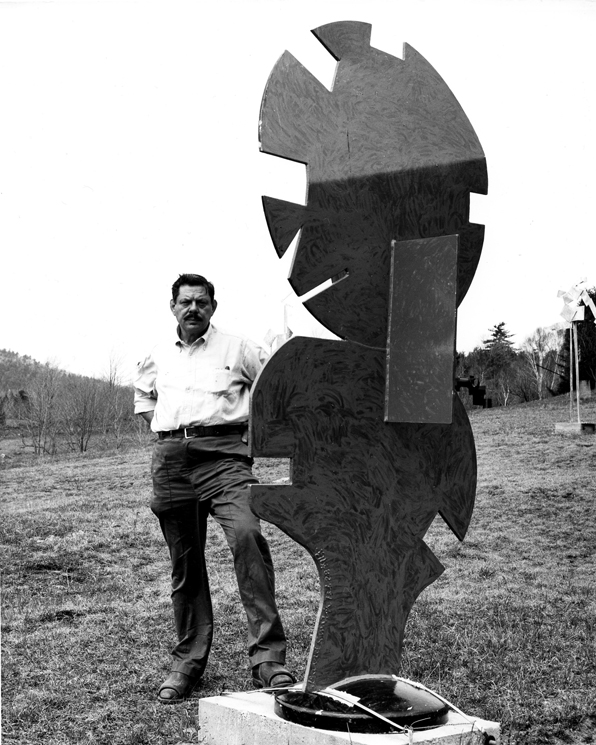
JULY 4–october 19, 2014
About the Artist

Photo: Douglass Crockwell
David Smith was born in Decatur, Indiana, in 1906. In 1924, he studied art at Ohio University. In the summer of 1925, he worked as a riveter at the Studebaker automobile factory before moving to Washington, D.C. There he took poetry classes at George Washington University. Smith moved to New York in 1926 and, at the suggestion of his first wife and fellow artist Dorothy Dehner, began taking classes at the Art Students League, where his teachers included Richard Lahey, John Sloan, and Jan Matulka. In 1930, Smith met John Graham, who introduced him to the welded steel sculptures of Pablo Picasso and Julio González. Smith purchased a farm in Bolton Landing, New York, near Lake George in 1929, where he would spend most summers before moving there permanently in 1940.
Smith established a workshop in Brooklyn’s Terminal Iron Works in 1934 and, during this period, became friends with Jackson Pollock, Willem de Kooning, Arshile Gorky, and other artists now known as the Abstract Expressionists. Despite his reputation as the sole sculptor among the Abstract Expressionists, Smith claimed: “I belong with the painters.” In 1950, he received a Guggenheim Fellowship enabling him the time and resources to devote himself entirely to his steel sculptures. During the 1950s, Smith represented the United States twice at the Venice Biennale and twice at the Sao Paulo Biennial. For one of his last major projects in 1962, Smith was invited to participate in the Festival of the Two Worlds in Spoleto, Italy. Using the remnants of vacant factories nearby, including tools, machines, and scraps, Smith created twenty-seven sculptures in only thirty days. He installed the entire collection of Voltri sculptures in a Roman amphitheater for the duration of the festival. Tragically, he died in a car accident in 1965 near Bennington, Vermont.
